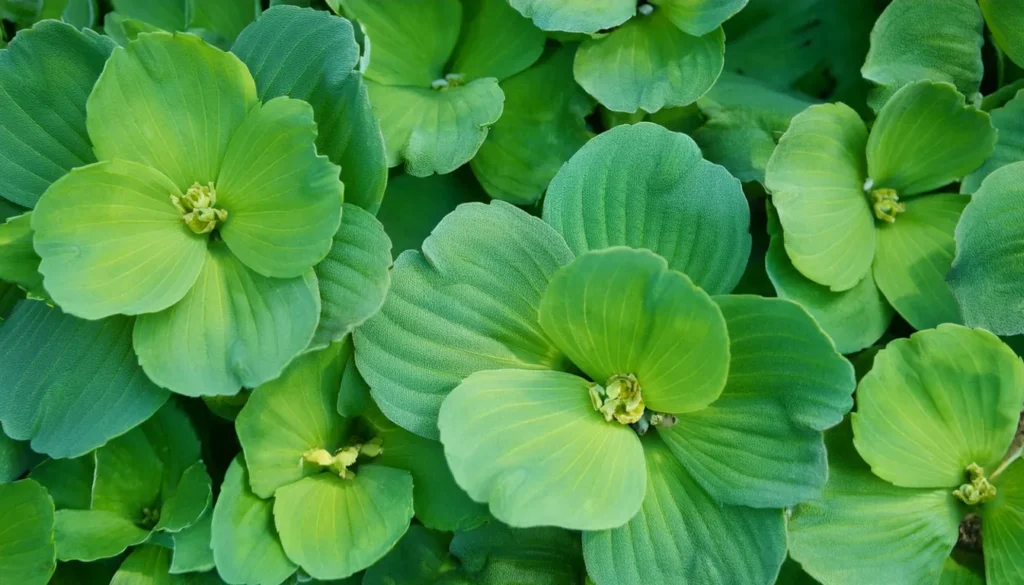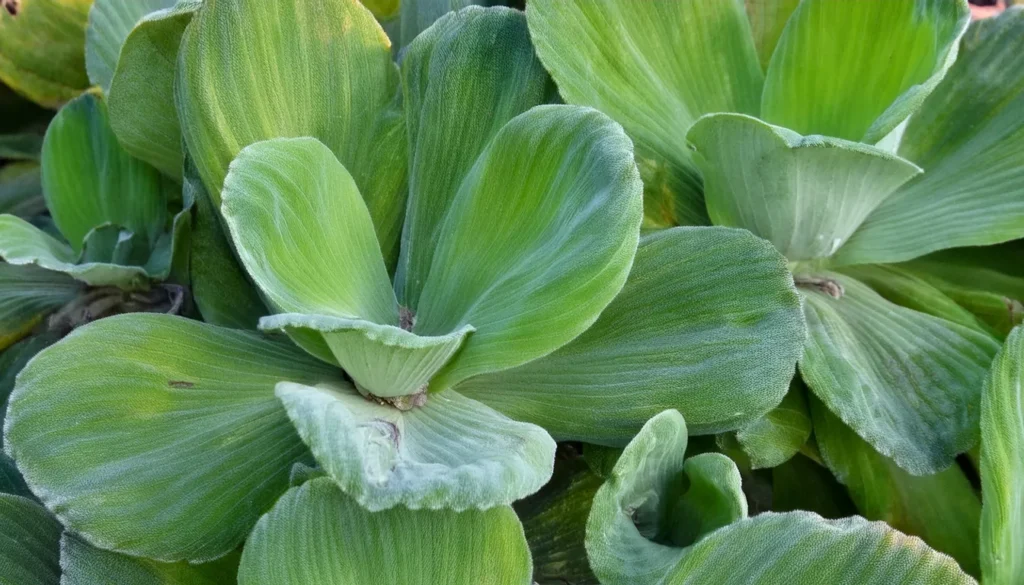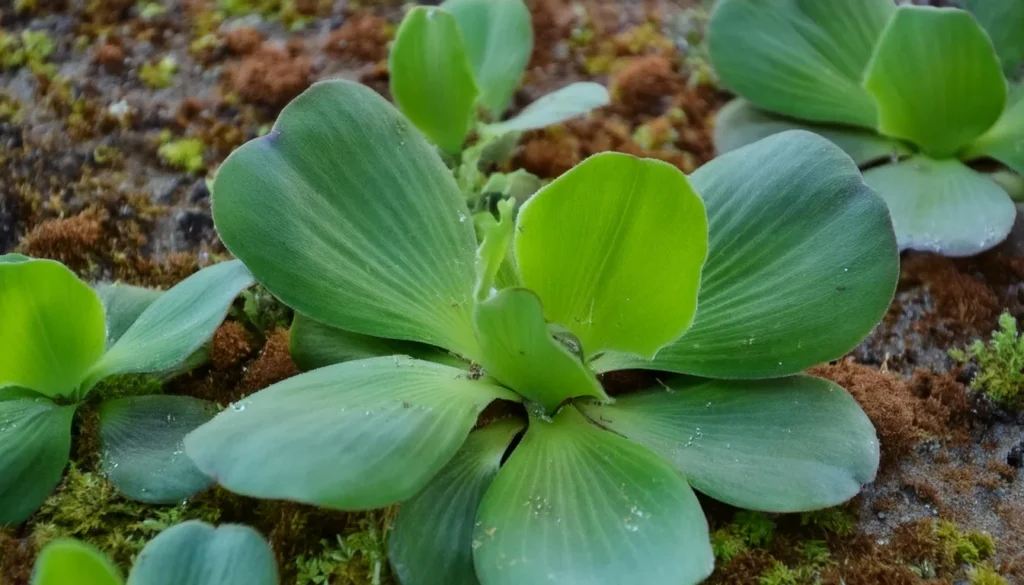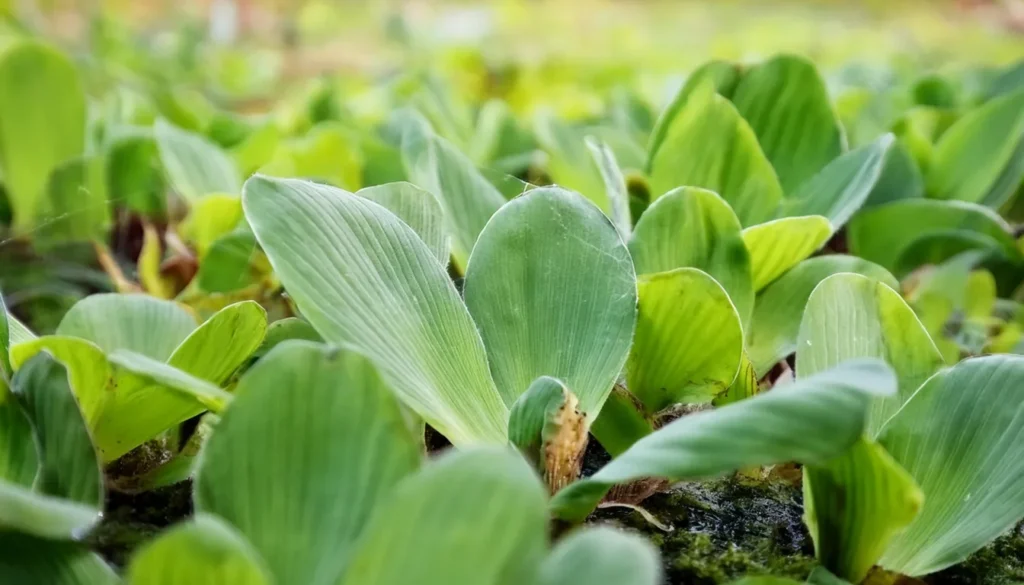Welcome to the fascinating world of Pistia Stratiotes, commonly known as Water Lettuce. This versatile aquatic plant is not only visually appealing but also serves important ecological functions.
In this article, we will explore the characteristics, history, cultivation, ecological contributions, and care of Pistia Stratiotes, as well as its role in enhancing aquatic gardens and creating a tranquil ambiance.
Join us as we dive deep into the wonders of Pistia Stratiotes.
Key Takeaway
- Pistia Stratiotes, also known as Water Lettuce, is a versatile and visually appealing aquatic plant.
- It plays an important role in ecological systems by improving water quality and providing habitat for aquatic life.
- Cultivating and caring for Pistia Stratiotes requires attention to specific needs like light requirements and water parameters.
- Responsible management is necessary to prevent the invasive nature of Pistia Stratiotes in certain regions.
- Combining Pistia Stratiotes with companion plants can enhance the diversity and aesthetics of aquatic gardening.
Quick Stats
| Attribute | Details |
| Family Name | Araceae |
| Origin | Tropical and subtropical regions worldwide |
| Height | 5-15 cm (2-6 inches) above the water surface |
| pH Range | 6.0 – 7.5 |
| CO2 Requirement | Low |
| Growth Rate | Fast |
| Care Level | Easy |
| Color Form | Bright Green |
| Water Conditions | 18-30°C (64-86°F), adaptable to a wide range of water hardness |
| Max Size | Can spread indefinitely, but individual rosettes remain compact |
| Lighting | Low to Moderate |
| Supplements | Minimal; benefits from nutrient-rich water |
| Placement | Floating |
| Propagation | Reproduces rapidly through side shoots and daughter plants |

What Is Pistia Stratiotes?
Pistia Stratiotes, commonly known as Water Lettuce, is a free-floating aquatic plant with distinct characteristics. It features lush, green rosettes of leaves that float on the surface of water bodies.
The leaves are thick, velvety, and covered in water-repellent hairs, allowing them to float effortlessly.
Characteristics Of Water Features
Pistia Stratiotes is not just a decorative plant; it plays a significant role in aquatic ecosystems. It helps maintain water quality by absorbing excess nutrients, provides shelter for aquatic life, and contributes to the overall balance of the ecosystem.
History And Origin
Pistia Stratiotes, also known as Water Lettuce, has a rich history and fascinating origin. This aquatic plant is native to tropical and subtropical regions, including Africa, the Americas, and Asia. Over time, it has spread to various parts of the world thanks to its adaptability and the ability to float and travel with water currents.
In fact, its name “Pistia” is derived from the Greek word “pisti,” which means “floater.”
Pistia Stratiotes has garnered attention in different cultures for its medicinal properties and aesthetic value. In traditional medicine, this plant has been used to treat various ailments due to its reported anti-inflammatory and pain-relieving properties.
Additionally, its lush green foliage and distinctive appearance make it a popular choice for aquatic gardening enthusiasts.

Light Requirements
Pistia Stratiotes thrives in bright, indirect light. Placing it in a location where it can receive ample sunlight without being directly exposed to intense heat is ideal.
This can be achieved by placing it near a window or using artificial lighting, such as grow lights, to provide the necessary light intensity.
Water Parameters
Water quality is essential for the optimal growth of Pistia Stratiotes. This plant prefers water with slightly acidic to neutral pH levels. Regular monitoring and adjustments of water pH may be necessary to maintain these levels.
Additionally, Pistia Stratiotes can tolerate a wide range of water temperatures but prefers warmer conditions, ideally around 70-85°F (21-30°C).
Temperature Needs
Pistia stratiotes, commonly known as Water Lettuce, thrives in temperatures ranging from 68°F to 86°F (20°C to 30°C).
Maintaining water temperatures within this range promotes optimal growth and health for this floating aquatic plant species. Ensure stability in temperature to support its growth and prevent stress-related issues.

Substrate Requirement
- No Substrate Needed: Water Lettuce is a floating plant, meaning it doesn’t need substrate for growth. It naturally floats on the water’s surface, absorbing nutrients directly from the water column.
- Water Quality Importance: While it doesn’t require substrate, maintaining good water quality is crucial. Ensure the water is clean, free from pollutants, and well-aerated to support healthy growth.
- Nutrient Uptake: Water Lettuce primarily obtains nutrients through its roots and leaves from the water. Therefore, regular water changes and the addition of aquatic plant fertilizers can help provide essential nutrients.
- Lighting Considerations: Although it doesn’t need substrate, adequate lighting is essential for photosynthesis. Provide moderate to bright indirect light for optimal growth, avoiding direct sunlight to prevent overheating and algae issues.
Placement Option
- Floating on Water Surface: Water Lettuce naturally floats on the surface of the water due to its buoyant nature. Simply place it directly onto the water’s surface, where it will spread out and form a dense mat over time.
- Aquarium or Pond: Whether in an aquarium or outdoor pond, Water Lettuce can be placed directly into the water. Ensure that the container or body of water has sufficient space to accommodate the plant’s growth without overcrowding other aquatic life.
- Shaded Areas: While Water Lettuce thrives in bright indirect light, it can benefit from some shading, especially in hotter climates or during periods of intense sunlight. Placing it near floating or marginal plants that provide shade can help prevent overheating and reduce the risk of sunburn.
- Aquatic Gardens: Incorporating Water Lettuce into aquatic garden setups adds a natural and aesthetic appeal. It can be strategically placed among other aquatic plants to create visual interest and provide surface cover for fish and other aquatic inhabitants.

Recommended Tank Size
- Small Tanks: For small aquariums or tanks, such as nano tanks or those under 10 gallons, consider using a few individual Water Lettuce plants or a small floating mat. Ensure that the plants do not overcrowd the tank and leave enough open space for fish and other inhabitants.
- Medium Tanks: Tanks between 10 to 50 gallons can accommodate a moderate number of Water Lettuce plants. A small group of plants or a floating mat can add visual interest to the tank while providing shade and cover for fish. Monitor the growth to prevent overcrowding and maintain balanced ecosystem dynamics.
- Large Tanks: Larger tanks, over 50 gallons, offer more space for Water Lettuce to thrive. Multiple floating mats or clusters of plants can be distributed across the surface, creating a natural-looking canopy and enhancing water quality. Ensure adequate space between plants to prevent overcrowding and allow for proper water circulation.
Companion Plants
- When selecting companion plants for Pistia Stratiotes, it is important to choose species with similar water and light requirements. This ensures that all plants in the aquatic garden can coexist harmoniously and thrive in the same environment. Additionally, considering the growth habits and sizes of the companion plants is crucial to prevent overcrowding and maintain a balanced aesthetic.
- Water lilies are an excellent companion plant for Pistia Stratiotes. Their vibrant blooms and wide leaves add color and texture to the aquatic garden. These plants also provide shade, which can help regulate water temperature and reduce algae growth. Some popular water lily varieties include Nymphaea ‘Attraction’ with its deep red blooms and Nymphaea ‘Marliacea Chromatella’ with its bright yellow flowers.
- Lotus plants are another stunning option to complement Pistia Stratiotes. These plants, known for their majestic blooms, create a breathtaking focal point in any aquatic garden. Lotus varieties like Nelumbo nucifera ‘Mrs. Perry D. Slocum’ with its pink double blooms or Nelumbo nucifera ‘Empress’ with its white flowers can transform the garden into a serene paradise.

Nutritional Needs
- Macronutrients: Water Lettuce requires essential macronutrients such as nitrogen (N), phosphorus (P), and potassium (K). These nutrients support overall growth, photosynthesis, and metabolic processes. Macronutrient deficiencies can manifest as stunted growth, yellowing leaves, or poor reproductive health.
- Micronutrients: Water Lettuce also benefits from micronutrients such as iron (Fe), manganese (Mn), zinc (Zn), and others. These trace elements play crucial roles in enzyme function, chlorophyll synthesis, and other biochemical processes. Micronutrient deficiencies can lead to chlorosis, leaf deformities, or reduced vitality.
- Carbon: Carbon dioxide (CO2) serves as a vital source of carbon for photosynthesis in aquatic plants, including Water Lettuce. While atmospheric CO2 can suffice for some tanks, supplementing with CO2 injection or liquid carbon supplements may enhance growth and vitality, especially in densely planted setups or high-light conditions.
Pistia Stratiotes Cultivation Tips
- Lighting: Provide moderate to bright indirect lighting for optimal growth. Avoid placing Water Lettuce directly under intense lighting to prevent leaf burn.
- Temperature: Maintain water temperatures between 70°F to 85°F (21°C to 29°C) for optimal growth. Ensure stability in temperature to prevent stress-related issues.
- Water Quality: Maintain clean, well-oxygenated water with minimal pollutants. Regular water changes help prevent nutrient buildup and maintain water quality.
- Nutrient Availability: While Water Lettuce absorbs nutrients from the water, supplementing with aquatic plant fertilizers can enhance growth. Ensure the presence of essential macronutrients and micronutrients.
- pH Level: Water Lettuce thrives in a slightly acidic to neutral pH range of 6.5 to 7.5. Monitor pH levels regularly and adjust if necessary to maintain optimal conditions.
Plant Propagation Tips
- Runners: Water Lettuce produces runners, which are horizontal stems that grow along the water surface. These runners give rise to new plants known as daughter plants. Simply allow the daughter plants to develop along the runners until they become large enough to be separated from the parent plant.
- Separation: Once the daughter plants have developed roots and leaves, they can be gently separated from the parent plant. Carefully detach the daughter plants from the runner, ensuring that each plant has its own root system intact.
- Division: Water Lettuce can also be propagated by dividing larger plants into smaller sections. Carefully separate the plant into individual sections, making sure each section has a portion of the main stem and root system. Plant the divided sections in suitable locations in the aquarium.

Benefits Of Planting Pistia Stratiotes
- Natural Filtration: Water Lettuce helps in improving water quality by absorbing excess nutrients such as nitrates and phosphates from the water, thus reducing the risk of algae blooms and maintaining a healthy aquatic environment.
- Oxygenation: Like other aquatic plants, Water Lettuce photosynthesizes and releases oxygen into the water during the day, promoting higher oxygen levels which are essential for the well-being of fish and other aquatic inhabitants.
- Shade and Shelter: The dense foliage of Water Lettuce provides shade and shelter for fish, shrimp, and other aquarium inhabitants, reducing stress and providing hiding places for shy or vulnerable species.
- Natural Habitat: Water Lettuce mimics the natural habitats of many freshwater fish and invertebrates, creating a more naturalistic and aesthetically pleasing environment for your aquarium inhabitants.
- Aesthetic Appeal: With its attractive rosette-shaped leaves and trailing roots, Water Lettuce adds beauty and visual interest to the aquarium, enhancing its overall appearance.

Conclusion
Pistia Stratiotes, also known as Water Lettuce, is a truly remarkable aquatic plant that offers numerous benefits to any aquatic environment.
Its lush green foliage not only adds beauty and tranquility but also plays a vital role in maintaining water quality and providing habitat for aquatic life.
With its ability to absorb excess nutrients and pollutants, Pistia Stratiotes is a natural water purifier, reducing algae growth and improving overall water clarity.
Additionally, its floating rosettes of leaves create a serene ambiance, transforming water gardens and aquariums into peaceful oases.
To ensure the thriving growth of Pistia Stratiotes, it is important to provide appropriate lighting, maintain optimal water parameters, and regularly thin out excess growth.
By following these best practices and responsibly managing this plant, you can enjoy the full benefits it offers and contribute to the health and enjoyment of your aquatic oasis.
Frequently Asked Questions
How Can Pistia Stratiotes Be Incorporated Into Garden Ponds And Aquariums?
In garden ponds, Pistia Stratiotes can be used to create naturalistic displays, while in aquariums, it can be arranged in floating arrangements to provide shade, shelter, and natural beauty.
What Are The Best Practices For Cultivating Water Lettuce?
Best practices include providing appropriate lighting, maintaining water parameters within the preferred range, regular thinning to prevent overcrowding, and monitoring for pests or diseases.
What Companion Plants Can Be Used With Pistia Stratiotes In Aquatic Gardening?
Plants like water lilies, lotus, and other floating or submerged plants can be used as companion plants to enhance diversity and aesthetics in aquatic gardening.
What Ambiance And Tranquility Does Pistia Stratiotes Offer In Aquatic Settings?
The lush green foliage of Pistia Stratiotes creates a serene and calming environment, enhancing the overall ambiance and tranquility of water gardens and aquariums.
What Are The Benefits Of Pistia Stratiotes, Also Known As Water Lettuce?
Pistia Stratiotes offers both beauty and functionality, improving water quality, providing habitat for aquatic life, and contributing to a healthy and enjoyable aquatic environment.
- Unveiling The Wonders Of Riccia Fluitans In Aquascapes - August 7, 2024
- Vallisneria Gigantea Var. Guide To Care And Cultivation At Home - July 31, 2024
- Vesicularia Dubyana Care & Growth Guide Tips For Beginner Gardeners - July 30, 2024
